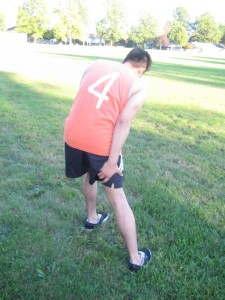Varicose veins are defined as engorged veins with a rope-like appearance. Generally, they are bluish or purplish in color which forms beneath the skin and affect the feet and legs.
The condition is brought about by malfunctioning valves in the veins that could not supply blood back to the heart effectively against gravity.
What are the signs?
In some cases, varicose veins are only an aesthetic concern. It is important to note that there is no direct connection between the manifestation of varicose veins and the soreness they trigger. Essentially, the large-sized twisty veins might not cause any discomfort, while damaged veins that are less evident can be painful.
Generally, several signs can contribute to the overall sensation of discomfort such as:
- Muscle cramping
- Sensation of heavy, aching legs
For immediate relief to the pain from varicose veins, raise the legs above the level of the heart. - Swelling in the calves and around the ankles
- Sensation of burning and throbbing in the legs
- Discomfort around an area of veins
These symptoms can become bothersome during warm days. Take note that the blood vessels are likely to widen with elevated temperatures which makes it difficult for the valves to properly function.
Remedies for varicose veins
There are various ways to lessen the pain brought about by varicose veins.
Elevation
For immediate relief to the pain from varicose veins, raise the legs above the level of the heart. The individual can position the feet up on a table, lie down flat in bed and rest the legs on several cushions or stretch the legs up a wall can help.
It works by making it easier for the blood flow in the lower body to circulate towards the heart and promote efficient functioning of the venous valves.
Exercise
A brief form of exercise to stretch the calf muscles several times a day is also beneficial. The feet must be flexed regularly especially during lengthy trips when the leg space is limited.
If standing is part of the job, change position at least every 30 minutes and try to flex the knees regularly.
Good hydration and physical movement supports good circulation of blood; thus, it is vital to drink more fluids and move around as much as possible.
Cold water
If the legs are aching at the end of the day, take a cold shower. The cool temperature can shrink the blood vessels. This can alleviate the swelling and associated sensation of heaviness and generalized discomfort and leg cramps.

